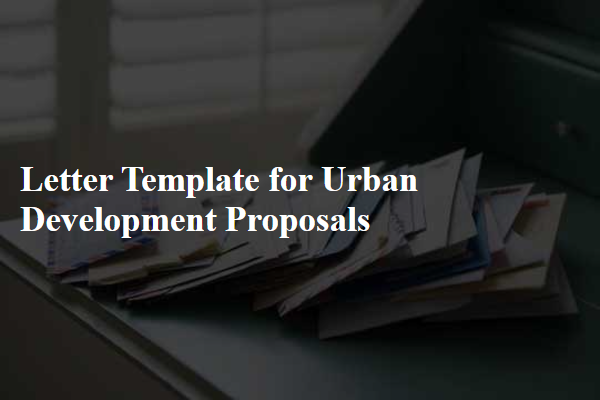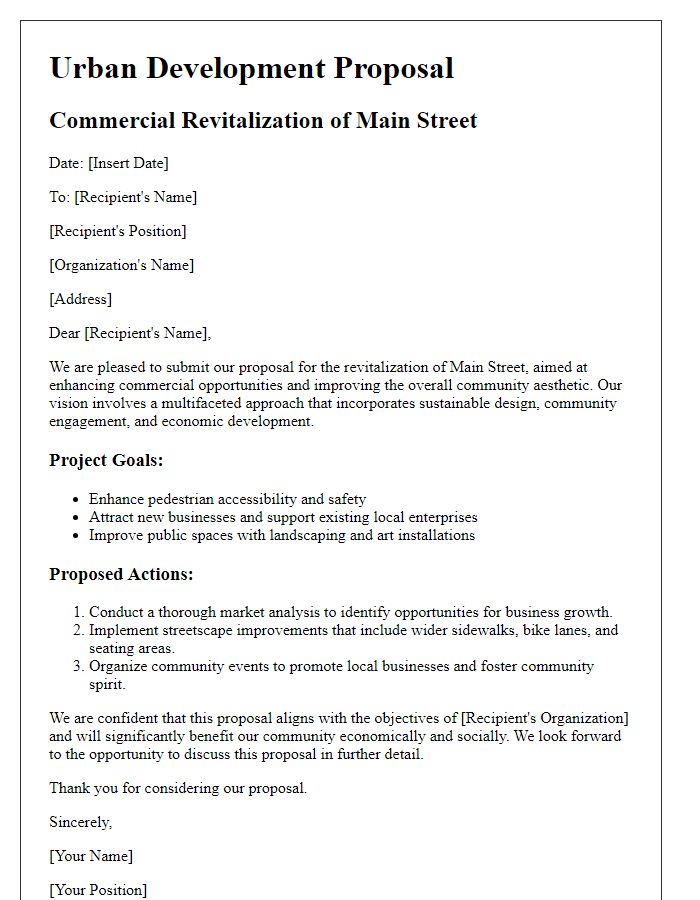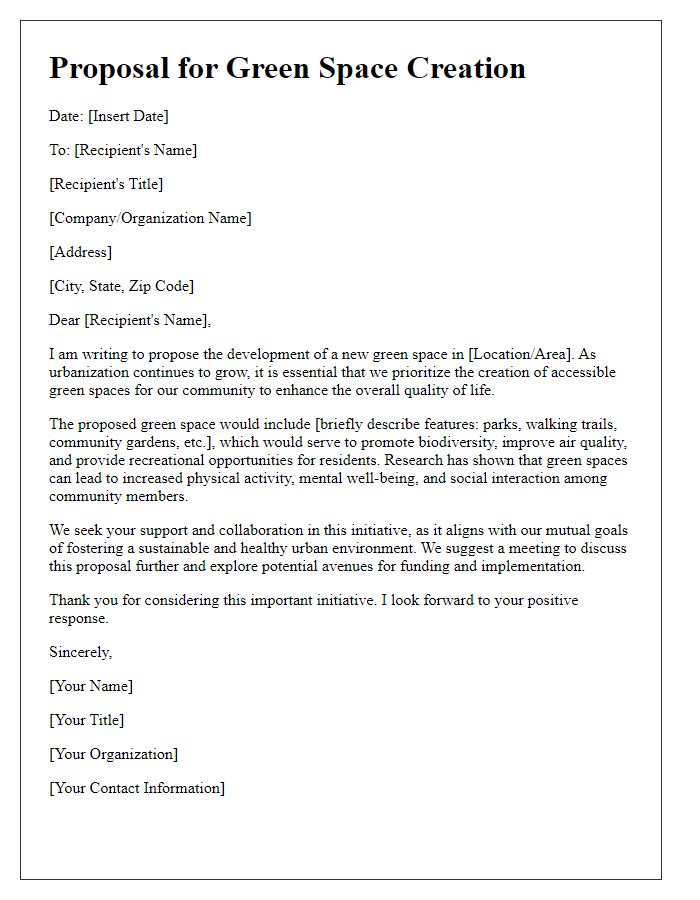Are you interested in shaping the future of your community through urban development? Crafting a compelling proposal is key to securing support and resources for transformative projects. In this article, we'll explore effective letter templates designed specifically for urban development initiatives, helping you articulate your vision with clarity and passion. So, let's dive in and unlock the potential for positive change together!

Location and Site Analysis
Urban development proposals require comprehensive location and site analysis to assess the potential benefits and challenges of a particular parcel of land. This analysis typically includes evaluating key factors such as zoning regulations (legal constraints that determine land use), topography (physical features and elevation changes), infrastructure (existing roads, utilities, and public transport systems), and environmental conditions (presence of natural resources or hazards). For instance, in metropolitan areas like San Francisco, California, considerations might include tech industry proximity, housing demand (current housing units and vacancy rates), and socio-economic demographics (income levels and population diversity). Additionally, historical context (previous land use decisions) and community input (feedback from local residents) play crucial roles in guiding the design and implementation of sustainable and inclusive urban environments.
Project Vision and Objectives
Urban development proposals aim to create sustainable and vibrant communities, enhancing the quality of life for residents. The vision centers on integrating green spaces, such as urban parks and tree-lined walkways, to promote environmental sustainability, improve air quality, and encourage outdoor activities. Objectives include increasing affordable housing availability by 25% within the next five years, enhancing public transportation accessibility through new bus routes and bike lanes, and fostering community engagement through local workshops and feedback sessions. Specific metrics, like reducing traffic congestion by 15% and increasing pedestrian safety, will drive successful implementation throughout high-density areas, such as downtown districts, ultimately leading to inclusive urban growth.
Community Impact and Benefits
Urban development initiatives play a crucial role in shaping city landscapes and enhancing community living standards. Thoughtfully designed projects, like mixed-use developments, can provide vital resources such as affordable housing, green spaces, and local retail opportunities, contributing to economic growth and improved quality of life. For instance, a new park established in downtown San Francisco can become a communal hub, fostering social interactions and promoting physical activity among residents. Additionally, incorporating public transportation options, such as a light rail system, can enhance connectivity, reduce traffic congestion, and lower carbon emissions. Engaging local stakeholders throughout the planning process ensures that community needs are prioritized, ultimately leading to sustainable development that benefits everyone involved.
Design and Infrastructure Details
Urban development proposals require detailed design and infrastructure specifications tailored to the project's goals. Key elements include zoning regulations (local ordinances dictating land use), structural integrity (ensuring buildings meet safety standards), and green space integration (incorporating parks and recreational areas). Effective transportation plans should outline pedestrian pathways, bike lanes, and public transit access, enhancing mobility and connectivity. Utility infrastructure should detail water supply systems, sewage management (critical for environmental cleanliness), and energy provisioning using sustainable technologies. Consideration of community services, such as schools, healthcare facilities, and commercial areas, fosters social well-being. Public engagement techniques, including feedback sessions with residents, are essential for aligning development with community needs.
Regulatory Compliance and Approvals
Urban development proposals require strict adherence to regulatory compliance and approvals mandated by local authorities. Key regulations include zoning laws, which dictate land use categories and density restrictions, often outlined in comprehensive plans for cities like New York or San Francisco. Environmental assessments are crucial, evaluating potential impacts on ecosystems, particularly near critical habitats identified by the Environmental Protection Agency. Community engagement is also vital; public hearings often occur to gather input from residents, ensuring transparency and adherence to the National Environmental Policy Act. Building permits must align with safety codes set by the International Building Code to guarantee structural integrity. Timelines for approval processes can vary significantly, sometimes extending beyond six months, depending on the complexity of the project and the thoroughness of the documentation submitted.
Letter Template For Urban Development Proposals Samples
Letter template of urban development proposal for sustainable living spaces

Letter template of urban development proposal for public transportation improvements

Letter template of urban development proposal for affordable housing initiatives

Letter template of urban development proposal for infrastructure upgrades

Letter template of urban development proposal for commercial revitalization

Letter template of urban development proposal for environmentally-friendly designs








Comments